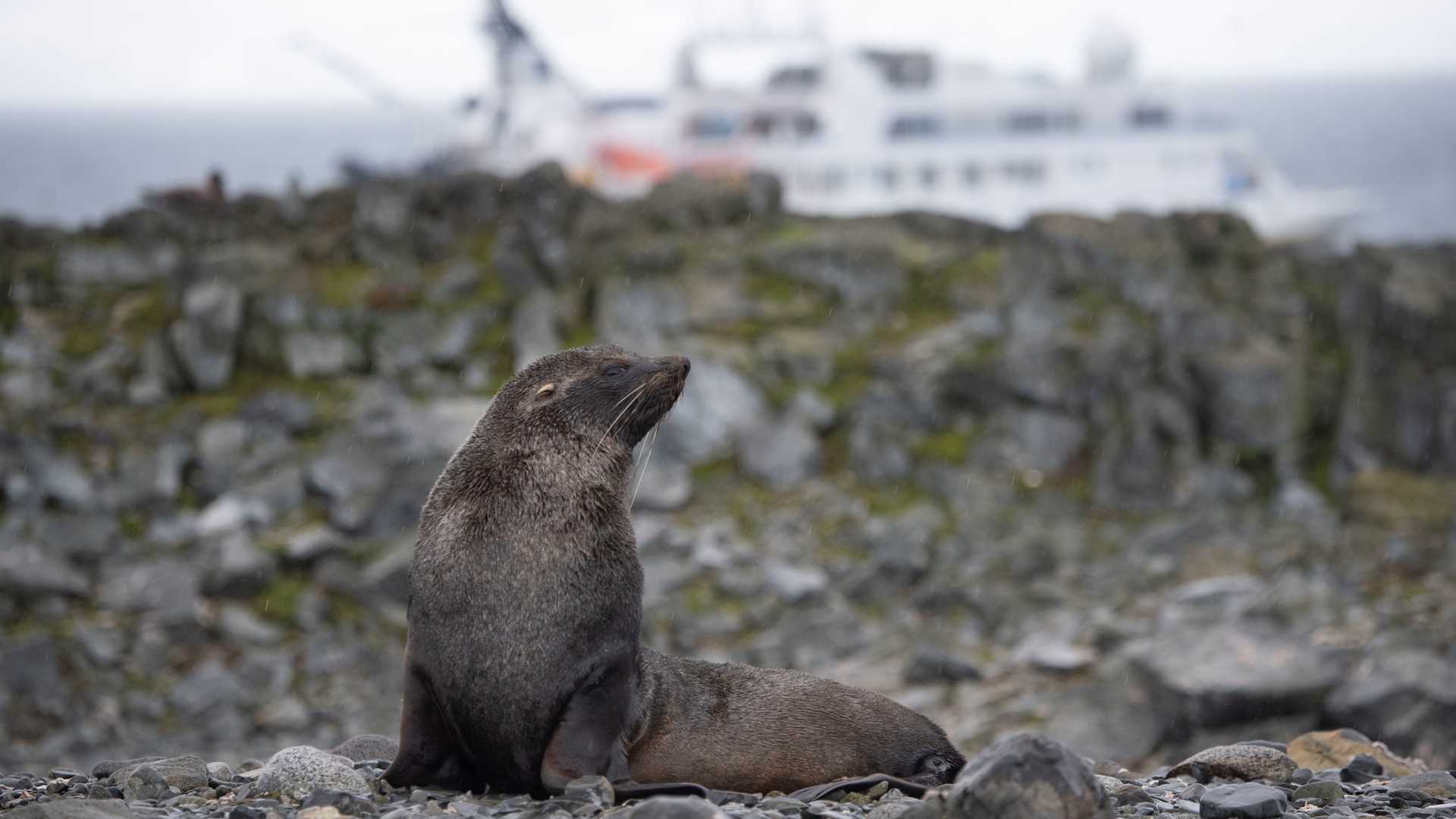This morning National Geographic Orion repositioned to the South Shetland Islands, in preparation for tomorrow’s crossing of the Drake Passage. Passengers could be found all over the ship, making the most of the ship’s amenities and activities. For some, this meant treatments from our wellness specialist, while others spent time up on the bridge watching humpback whales and learning about navigation from the ship’s officers. By late morning, everyone convened in the lounge for a presentation from our naturalist staff, who spoke about the fascinating geologic history of the sites we visited during the voyage. The ship arrived at Half Moon Island and everyone disembarked for afternoon activities with the intent of spending the entire afternoon ashore.
Half Moon Island sits in a large bay on the northeastern side of Livingston Island. This is a site of historical significance, being one of the main anchorages used by sealers in the 1820s. The island is also home to a large chinstrap penguin colony, and many nesting seabirds. Argentina also maintains a small research base named Camara Station here, which is periodically used during the summer months. Since there is so much to do here, the entire afternoon was allotted for exploration.
Many guests chose to take a longer hike, following a beach route that steepens and ultimately ascends a 300-foot ridge to gain spectacular views of the glaciers surrounding the small island. Along the way, our naturalist guides pointed out fur, elephant, and Weddell seals, demonstrating how populations of these charismatic marine mammals have been rebounding since the hunting era of long ago. Many gentoo penguins were encountered along the beach too. In this area of the Antarctic Peninsula, this penguin species has already finished rearing their chicks and are now molting their feathers in preparation for spending many months at sea hunting for krill, fish, and squid. Half Moon Island is exceptional in that it is not glaciated, and it felt good to walk for a few miles, making discoveries along the way.
Certainly though, the highlight of the day was the nesting chinstrap penguins. Guests were delighted to watch these spirited penguins coming and going from the beach and making the formidable uphill journey to feed their chicks. Chinstrap penguins are often compared to mountaineers, as they prefer to nest on rocky outcrops on steep slopes, unlike their close cousins who also nest here on the peninsula.
This evening, all aboard are making preparations for the final segment of our trip through the Drake Passage. But first, some entertainment in the form of a presentation from our video chronicler who has documented the entire journey.







